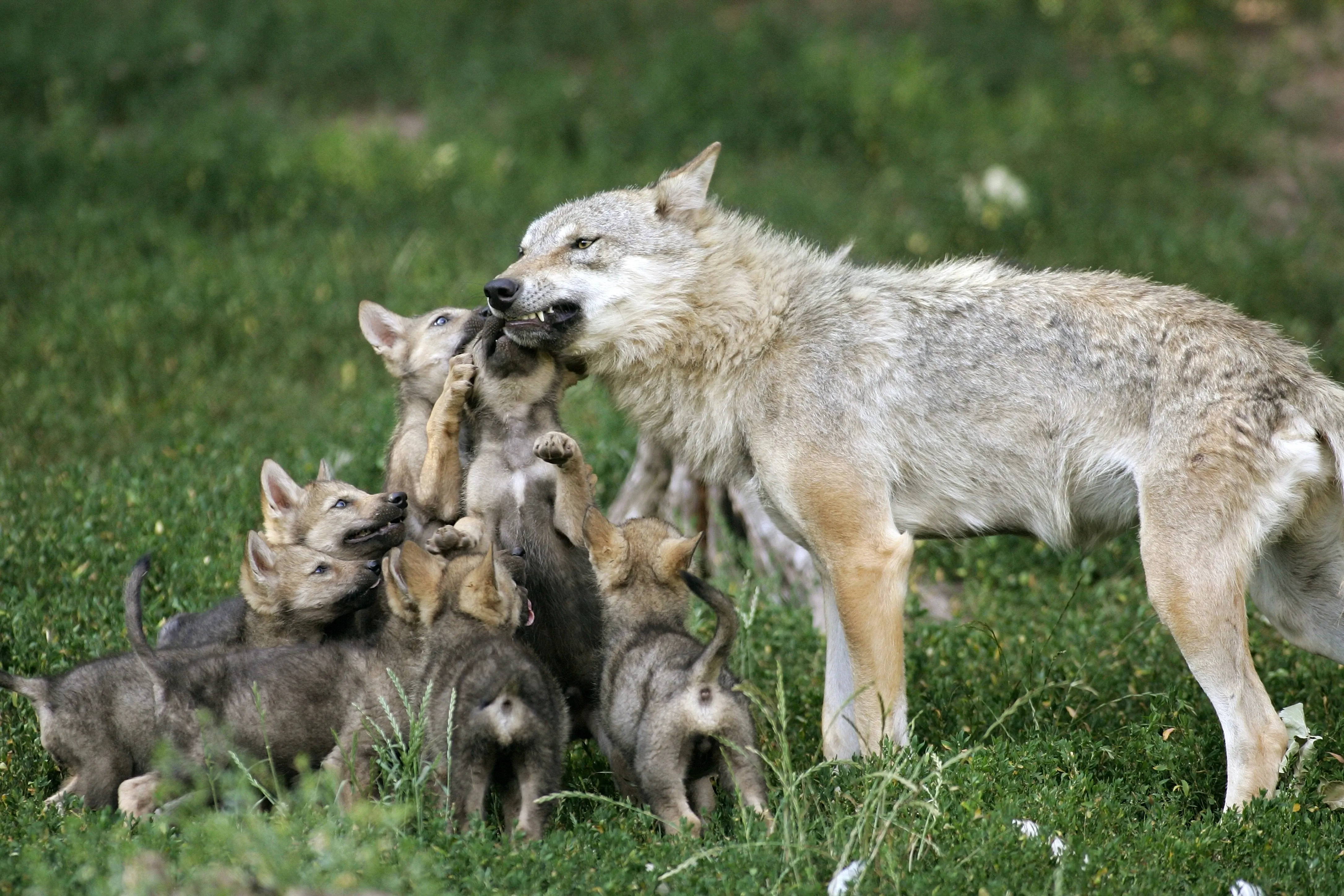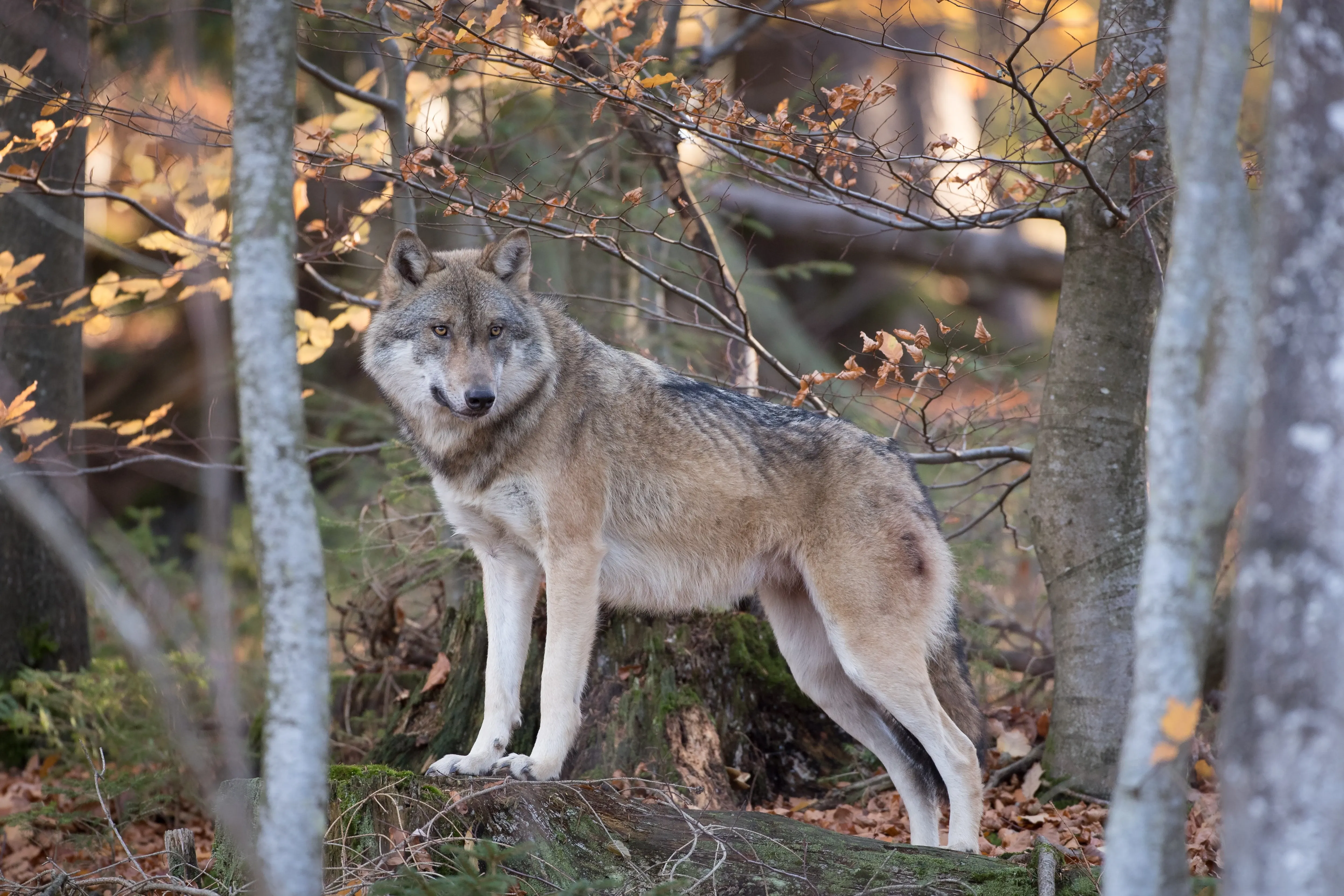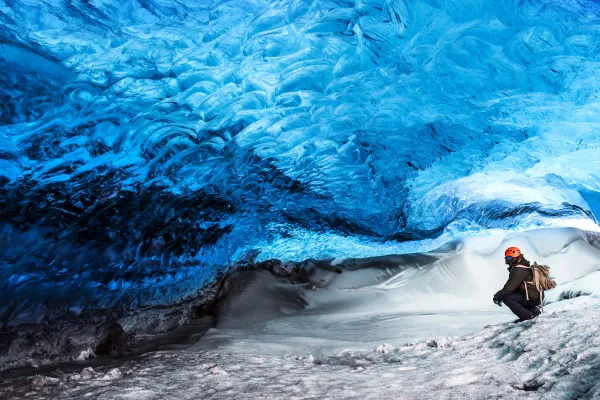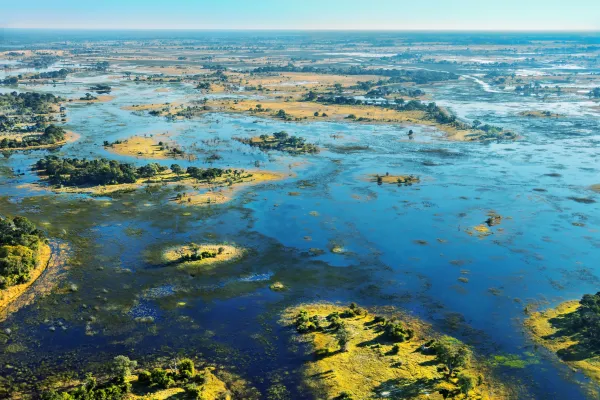Species Introduction: European wolf
The European wolf, Canis lupus, holds a significant place in European culture and ecology. Once widespread, it became a symbol of wilderness and resilience. Despite historic persecution, conservation efforts have helped some populations recover.
Today, the presence of wolves sparks both fascination and controversy, reflecting the ongoing challenge of balancing human activities with the preservation of biodiversity. The birth of the first wolf pups in the wild in Germany in 2000, after humans had wiped them out, was a sensation. The animals have been reclaiming their original home in Germany for several years now. As wolf populations continue to rebound across Europe, their resurgence prompts critical discussions about coexistence strategies and wildlife management policies.
Explore the intricate behaviors and ecological significance of the European wolf as we delve into its distinctive traits and preferred habitats in this comprehensive article.
Fact sheet European wolf
- Name: European Wolf
- Scientific name: Canis lupus
- Order: Predators (Carnivora)
- Superfamily: Dog-like animals (Canoidea)
- Family: Dogs (Canis)
- Characteristics: Grey, brown or black fur, Light muzzle area, triangular ears, high-legged
- Size: Shoulder height between 70 and 90 cm
- Weight: Approx. 30 to 50 kg
- Origin: Alpine region, Slovenia, Italy, Spain, Scandinavia, Portugal, Germany
- Habitat: Wooded mountain regions and extensive forest areas
- Territory size: About 100 km²
- Diet: Cloven-hoofed animals, small mammals
- Social behaviour: Wolves live in a pack
- Endangerment status: Extinct in many countries (e.g. Germany)
- Life span: Up to 13 years
Typical characteristics of the european wolf
The European wolf reaches a shoulder height of 70 to 90 cm and a length of up to 140 cm long. The females are usually smaller and thus lighter than the males. The stature of the wolf is similar to that of the German shepherd dog. However, the wolf is more high-legged, has a straighter back and has smaller ears than the German shepherd. The tail of the wolf is predominantly hanging and bushy.
The European wolves vary in coat colour from dark grey to grey-brown to yellowish-grey. Their backs are often marked with a dark saddle patch. The underside of the muzzle and the throat are typically pale.
Special abilities of the wolf
The wolf has an excellent sense of smell. At a distance of up to 2.5 km, the wolf can smell both its prey and its other wolves. Wolves have a wide angle of vision of 250°. The angle of vision of humans is much smaller. It is only 180°. In addition, wolves have visibility at night.
The physique of the wolf described above indicates that it is an endurance runner. On average, the wolf covers about 45 km on its daily forays. The wolf mainly travels at a quiet, steady trot. However, it can also reach top speeds of up to 50 km/h.
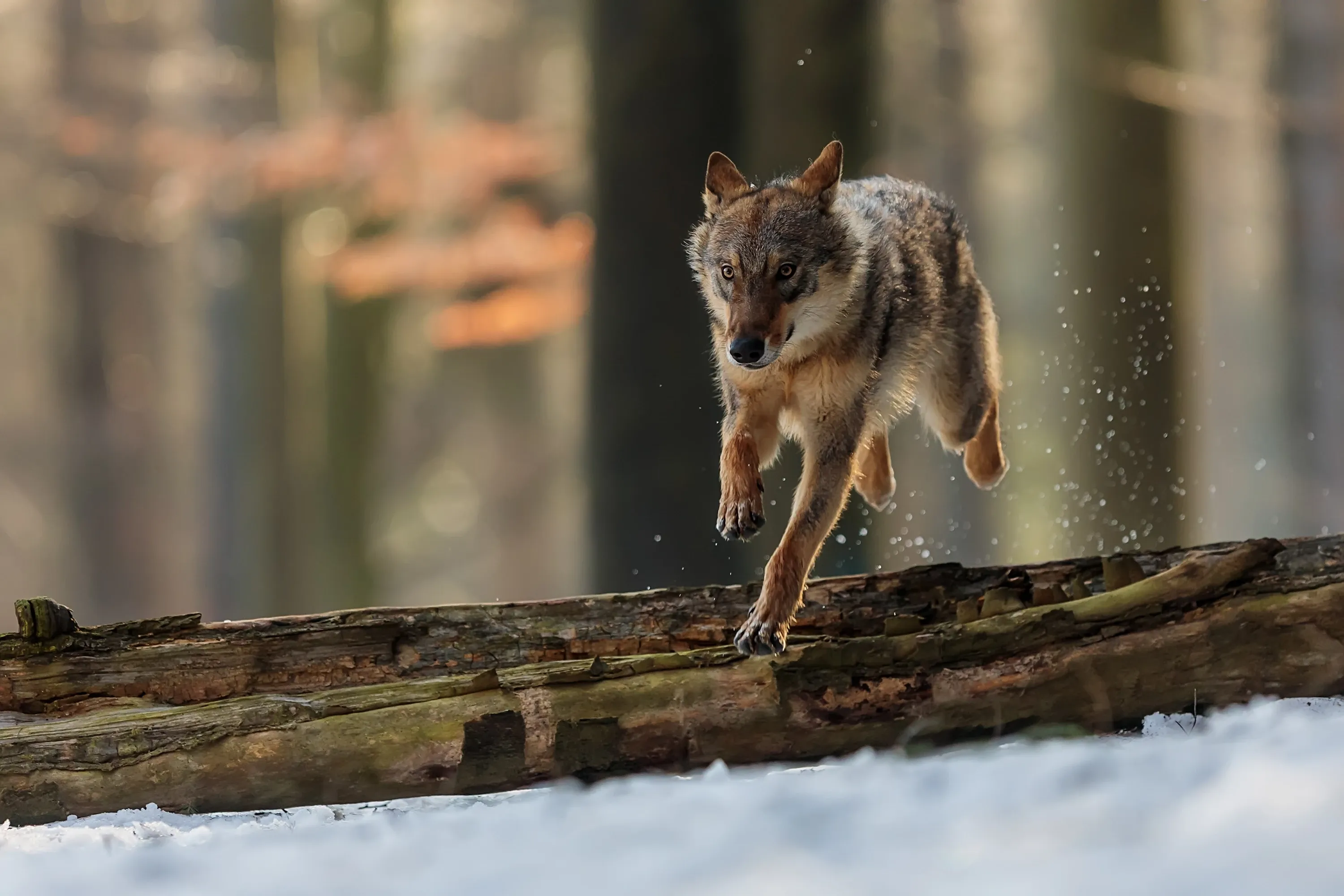
Diet of the European wolf
The wolf is a predator. It specialises in hunting cloven-hoofed animals. In Northern Europe, the wolf often feeds on reindeer and moose. In Central Europe, their primary food is roe deer, red deer and wild boar. In Southern Europe, wild cloven-hoofed animals are lacking as a possible food source for the wolf. Therefore, livestock and human waste make up a significant part of the diet here.
The wolf is a hunter in energy-saving mode. Therefore, wolves often prey on older or sick animals, as they are easy prey. Farm animals can also be easy prey if they are not properly fenced or guarded. Moreover, the wolf eats small mammals whole. In the case of larger prey, the wolf leaves scraps from which other animals can profit. In this way, the wolf contributes to the ecosystem.
Distribution and habitat
Wolves are very adaptable and inhabit the most diverse areas. In Germany, the wolf's habitat is mainly grassland and forests. The wolf was once one of the most widespread mammal species in the world. The wolf population has recovered in the last 30 years, thanks to strict animal protection.
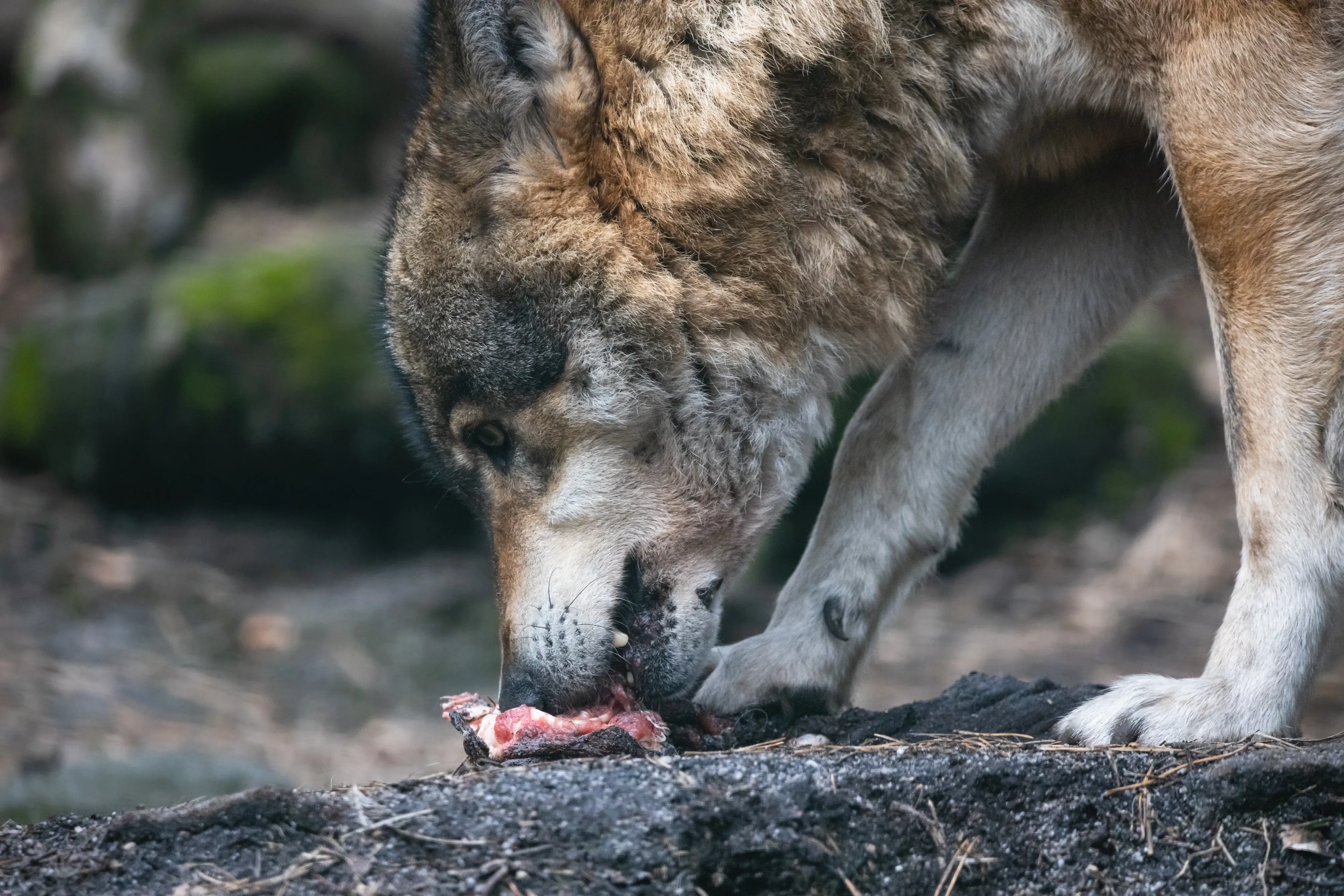
The behaviour of wolves
Wolves live in a pack, which consists of a parent pair and their offspring. The parent pair develops a strong bond and usually stays together for life. Most of the young animals leave their pack when they reach sexual maturity at the age of 1 to 2 years in order to start their own pack.
Each pack lives in its own territory. The size of the territory is determined by the availability of prey, in order to secure the pack's food in the long term. Usually, a territory covers about 150 to 200 square kilometres. However, individual animals can also be found in the wild.
Interesting questions
1. How do wolves communicate?
To communicate, the wolf uses long, loud howls. On top of that, they communicate with various gestures (body language).
2. How do wolves reproduce?
Young wolves are usually sexually mature at 22 months. Between February and March is the wolves' mating season. The female wolf is nine weeks pregnant. Thus, four to six pups are born in a burrow in April or May.
The pups are at first blind and deaf and are nursed by the mother. After 20 days, they leave the burrow for the first time and start to eat solid food, but they are also nursed until they are 8 weeks old.
3. Is the wolf endangered?
The wolf is endangered by the fragmentation of its habitat and by traffic. There are also individual animals that are shot illegally.
Three fascinating facts about wolves
- Wolves are the wild ancestors of all our domesticated dogs, from poodles to bulldogs to greyhounds.
- Wolves can go more than a week without food.
- Wolves howl to strengthen pack bonds and warn other wolf packs to stay away - but contrary to popular belief, wolves do not howl at the moon.
History of wolves in Germany - Chronic course
The wolf was demonised by humans for centuries and was eradicated in Germany. However, the wolves have come back to Germany to stay. In this chronicle, we take you on a journey through the time of the wolf in Germany:
1850: In Brandenburg, the last signs of wolf packs are disappearing.
1904: The "last" wolf in Germany is shot.
1990: With the German reunification, the wolf comes under legal protection throughout Germany.
2000: The first pups are born in the wild in Germany. With these pups, the first wolf pack since extinction is formed in Germany. The year 2000 is therefore considered the year of the wolves' return.
2006: Several wolves are killed in traffic accidents.
2009: Despite much media attention, a male wolf is shot during a hunt in Saxony-Anhalt. The hunter gets off without conviction. It is said that he had mistaken the wolf for a dog.
Does the wolf has a future in Germany?
It is certain that the wolf is and will remain a controversial species in Germany. For hunters, the wolf is a competitor. And farmers fear for their animals. To protect their grazing animals, they install special electric fences or use guard dogs. If a farm animal is nevertheless killed by a wolf, the economic damage is compensated (wolf fund).
Over the next few years, it can be assumed that more packs will settle in suitable habitats in Germany - if people let them.
It is vital to raise awareness and develop wildlife management plans with affected target groups to combat the public's lack of knowledge, intolerance and fears.
Sign up for the newsletter
By clicking on “Subscribe now” I will subscribe to the Conscious Explorer newsletter with all the information about mindful travel. Information on the success measurement included in the consent, the use of the shipping service provider MailChimp, logging of the registration and your rights of revocation can be found in our privacy policy.

